WNI Global KS5X KymaStar KS5X User Manual KS UM Multi Function 1 0 4 W2
WNI Global, Inc. KymaStar KS5X KS UM Multi Function 1 0 4 W2
Contents
- 1. Users Manual Part 1
- 2. Users Manual Part 2
Users Manual Part 1

1
I
IE
EE
EE
E8
8
0
0
2
2
.
.1
11
1a
a/
/b
b/
/g
g
E
En
nt
te
er
rp
pr
ri
is
se
e-
-c
cl
la
as
ss
s
O
Ou
ut
td
do
oo
or
rM
Mu
ul
lt
ti
i-
-f
fu
un
nc
ct
ti
io
on
nR
Ra
ad
di
io
o
E
Ex
xt
te
er
rn
na
al
l/
/I
In
nt
te
eg
gr
ra
al
lA
An
nt
te
en
nn
na
aT
Te
er
rm
mi
in
na
al
l
K
Ky
ym
ma
aS
St
ta
ar
r:
:K
KS
S5
5X
X-
-2
23
30
01
1-
-E
EX
XT
T/
/I
I2
23
3/
/I
I2
20
0
K
KS
S5
5X
X-
-1
15
50
01
1-
-I
I1
14
4
K
KS
S2
24
4-
-2
23
30
02
2-
-E
EX
XT
T/
/I
I1
18
8
K
KS
S2
24
4-
-2
27
70
02
2-
-E
EX
XT
T/
/I
I1
18
8
U
US
SE
ER
RM
MA
AN
NU
UA
AL
L
V
Ve
er
rs
si
io
on
n1
1.
.0
0.
.4
4.
.W
W2
2
A
Au
ug
gu
us
st
t2
20
00
07
7
Website: www.wnint.com
Address : 2146 Bering Drive, San Jose, CA 95131, USA
TEL : +1-408-432-8892, FAX : +1-408-432-8896

2
Table of Contents
CHAPTER 1. INTRODUCTION..................................................................................................... 4
1-1 OVERVIEW............................................................................................................................... 4
1-2 KEY FEATURES........................................................................................................................5
1-3 ADDITIONAL MATERIAL REQUIRED ........................................................................................7
1-4 HARDWARE DESCRIPTION ......................................................................................................8
1-5 HARDWARE INSTALLATION...................................................................................................12
CHAPTER 2. BASIC INSTALLATION AND SECURITIES .....................................................16
2-1 DEFAULT FACTORY SETTINGS ..............................................................................................16
2-2 GETTING TO KNOW RADIO WIRELESS SECURITY OPTIONS ................................................ 17
2-3 INSTALLING THE RADIO AS AN AP (ACCESS POINT)............................................................. 18
CHAPTER 3. GENERAL INFORMATION ................................................................................. 20
3-1 INFORMATION ....................................................................................................................... 20
3-2 CONNECTION.........................................................................................................................22
CHAPTER 4. MULTIPLE FUNCTIONALITIES........................................................................ 24
4-1 TIME SERVER ........................................................................................................................ 24
4-2 BRIDGE/ROUTER MODE ....................................................................................................... 25
4-3 UNDERSTANDING RADIUS SETTINGS.................................................................................. 26
4-4 HTTP REDIRECT .................................................................................................................. 27
4-5 FIREWALL MANAGEMENT .................................................................................................... 28
4-6 VIRTUAL SERVER .................................................................................................................. 30
CHAPTER 5. WIRELESS SETUP ................................................................................................ 32
5-1 BASIC SETTINGS.................................................................................................................... 32
5-2 VAP / VLAN SETTINGS......................................................................................................... 34
5-3 UNDERSTANDING WEP/WPA SECURITY OPTIONS .............................................................. 36
5-4 ACCESS CONTROL................................................................................................................. 39
5-5 WDS MODE........................................................................................................................... 39
5-6 SMART WDS.......................................................................................................................... 40
5-7 ADVANCED SETTINGS............................................................................................................ 40
CHAPTER 6. MANAGING AND TESTING YOUR AP .............................................................43
6-1 SITE SURVEY ......................................................................................................................... 43
6-2 LINK TEST .............................................................................................................................44
CHAPTER 7. MANAGEMENT..................................................................................................... 45
7-1 CHANGE PASSWORD.............................................................................................................. 45
7-2 REMOTE MANAGEMENT .......................................................................................................46
7-3 UPGRADE FIRMWARE............................................................................................................ 49
7-4 BACKUP /RESTORE SETTINGS ..............................................................................................50
7-5 EVENT LOG ........................................................................................................................... 51
7-6 REBOOT AP ........................................................................................................................... 52
7-7 HARDWARE RESET ................................................................................................................52
CHAPTER 8. TROUBLESHOOTING.......................................................................................... 53
8-1 GENERAL DESCRIPTIONS...................................................................................................... 53
8-2 CONNECTION ISSUES.............................................................................................................55
8-3 CONFIGURATION ISSUES .......................................................................................................56
8-4 COMMUNICATION ISSUES .....................................................................................................57
CHAPTER 9. PRODUCT DATASHEET AND CONTACT INFOMATION ........................................... 60
9.1 PRODUCT DATASHEET ...........................................................................................................60
9.2 WNI GLOBAL CONTACT INFORMATION ...............................................................................63
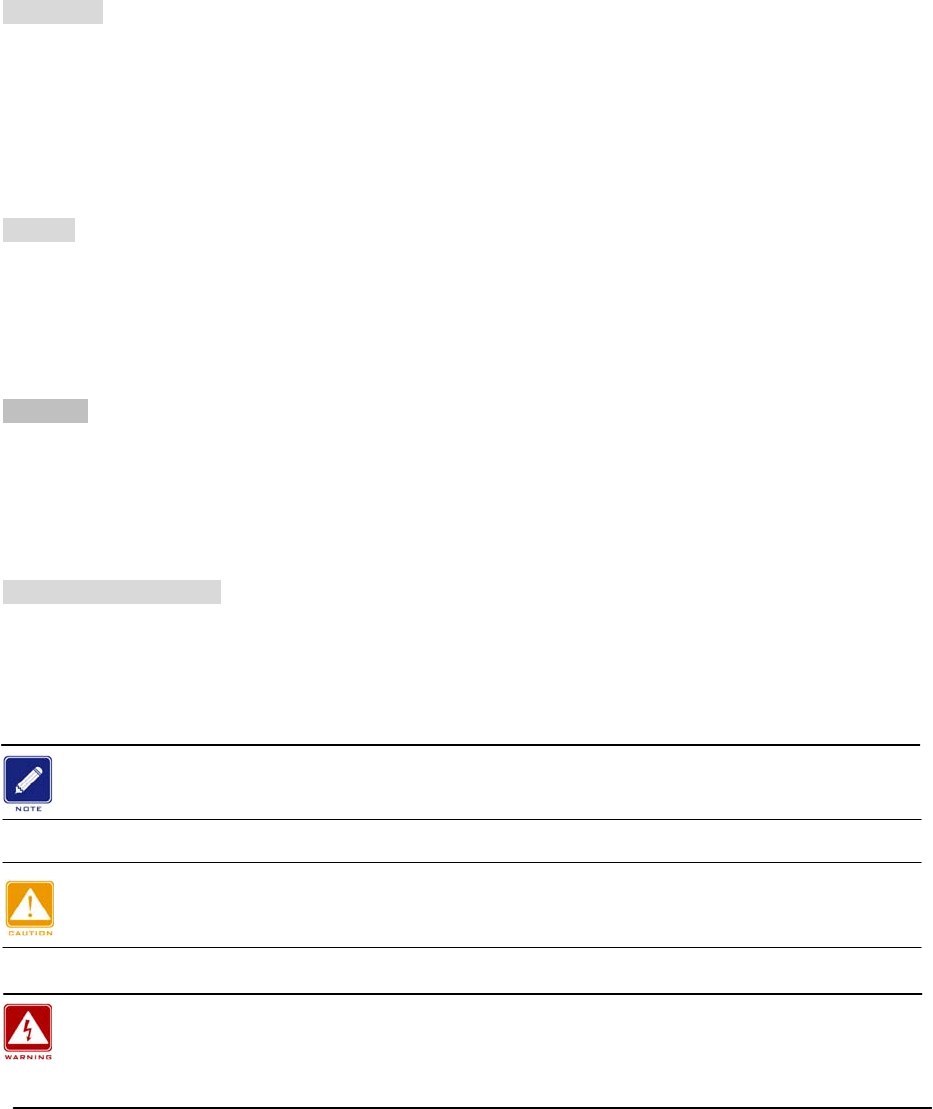
3
Copyright
This user’s manual and the software described in it are copyrighted with all rights reserved.
No part of this publication may be reproduced, transmitted, transcribed, stored in a retrieval
system, or translated into any language in any form by any means without the written
permission of WNI Global Inc..
Preface
About This Manual
This manual details the installation, operation, and troubleshooting of the enterprise-class
IEEE 802.11a or 802.11b/g outdoor radio.
ANATEL
Although this radio operates in 5,2 GHz to 5,8 GHz frequency bands, it is certified with
ANATEL for operating in Brazil in the 5725 – 5850 MHz (5,8 GHz) band. All other bands are
disabled to avoid wrong radio settings that do not comply with ANATEL.
Document Conventions
This publication uses the following conventions to convey instructions and information:
STA refers to a station
ETH refers to a PC
This symbol means reader take note.Notes contain helpful suggestions or references
to materials not contained in this manual.
This symbol means reader use caution. In this situation, you might do something that
could result in equipment damage or loss of data.
This warning symbol means danger. You are in a situation that could cause bodily
harm. Before you work on any equipment, be aware of the hazards involved with
electrical circuitry and be familiar with standard practices for preventing accidents.
NOTE: 1. This manual uses 5.X GHz IEEE 802.11a product as example.
2. 2.4 GHz IEEE 802.11g/b is same as 802.11a except where noted.
3. KymaLite is a lower powered KymaStar in a smaller package and is
available with integral antenna only.
4
Chapter 1. Introduction
Thank you for choosing this Enterprise-class IEEE 802.11a or 802.11b/g outdoor
multi-function radio. This radio provides a secure, affordable, and easy-to-use wireless LAN
solution that combines mobility and flexibility with the enterprise-class features required by
networking professionals.
This chapter gives an overview of the enterprises-class radio, as well as its key features. We
also provide details of the hardware, system requirements and basic installation.
1-1 Overview
802.11a/b/g-compliant, VLAN functionality allows a single network AP to serve as 8 virtual
network APs. WMM prioritizes traffic demands from different applications and extends
Wi-Fi’s high quality end-user experience from data connectivity to voice, music, and video
applications under a wide variety of conditions.
This Access point can serve as a connection point between wireless and wired networks or as
the center point of a stand-alone wireless network. In large installations, wireless users within
radio range of an access point can roam throughout a facility while maintaining seamless,
uninterrupted access to the network.
This Access Point can be configured and monitored using the command-line interface,(CLI),
the browser-based management system, or Simple Network Management Protocol, (SNMP).
This radio currently can support a data rate of up to 108Mbps. (In Super A or Super G mode)
The instructions in this Guide will help you connect the outdoor radio, set it up, and configure
it.
5
1-2 Key Features
The radio is user-friendly and provides solid wireless and networking support. The following
standards and conventions are supported:
• IEEE 802.11a or 802.11b/g
The Wireless Access Point complies with the IEEE 802.11a or 802.11b/g for Wireless LANs.
• WEP Support
The radio supports WEP 64-bit, 128-bit, and 152-bit keys.
• DHCP Client Support
DHCP Server provides a dynamic IP address to PCs and other devices upon request. The
radio can also be configured as a client and obtain information from your DHPC server.
• RADIUS Accounting
Enable accounting on the access point to send data regarding wireless client devices to an
accounting RADIUS server on your network.
• SNMP
The radio supports Simple Network Management Protocol (SNMP) Management Information
Base (MIB) management.
• Multiple operating modes
1. Access point
2. Station Adapter
3. Point-to-Point Bridge.
4. Wireless Repeater
5. Inter-building
• VAP (Virtual Access Point), or VLAN
Assign Multiple SSIDs on your radio (one SSID per VAP) to differentiate policies and services
among users forming a wide variety of VLANs.
• Wi-Fi Multi-media (WMM)
Radio also supports the voice-prioritization schemes by using the 802.11a wireless phones
via enable the WMM application.
6
•Transmit Power Control
Power levels can be set to full, half, quarter, eighth, and minimum.
•Atheros Super A (5.X GHz)or Super G (2.4 GHz) Mode
Super A mode enables over the air transmission rates of up to 108Mbps.
• Multiple security settings per VLAN with up to 8 VLANs
Security settings for up to eight VLANs can be set individually, thus offering high level security
where it is needed.
•Hidden Mode
The SSID is not broadcast, assuring only clients configured with the correct SSID can
connect.
•Access Control
The MAC address filtering feature can ensure that only trusted wireless stations can use the
radio to gain access to your LAN.
7
1-3 Additional Materials Required
Before installing the radio, make sure you have the following materials
• Category 5 UTP straight through Ethernet cable with RJ-45 connector for connection
between your network or PC and the PoE injector
• Category 5 SFTP (Shielded) straight through Ethernet cable with weather-proof RJ-45
connector for connection between the PoE injector and the radio.
• A 100~240 V, 50~60 Hz AC power source
• A PC with a Web browser such as Microsoft Internet Explorer 6.0 or above, or Netscape
Navigator 4.78 or above for configuration.
What’s In the Box?
• 802.11 a or 802.11b/g Outdoor radio * 1
• Power adapter and cord * 1
• Power over Ethernet (POE) * 1
• Quick Installation Guide * 1
• Installation CD for the radio *1
• Mounting kit *1
• RJ-45 weather-proof connector for the SFTP cable * 1
If any part is missing or damaged, please contact WNI Global, Inc. or your local
reseller.
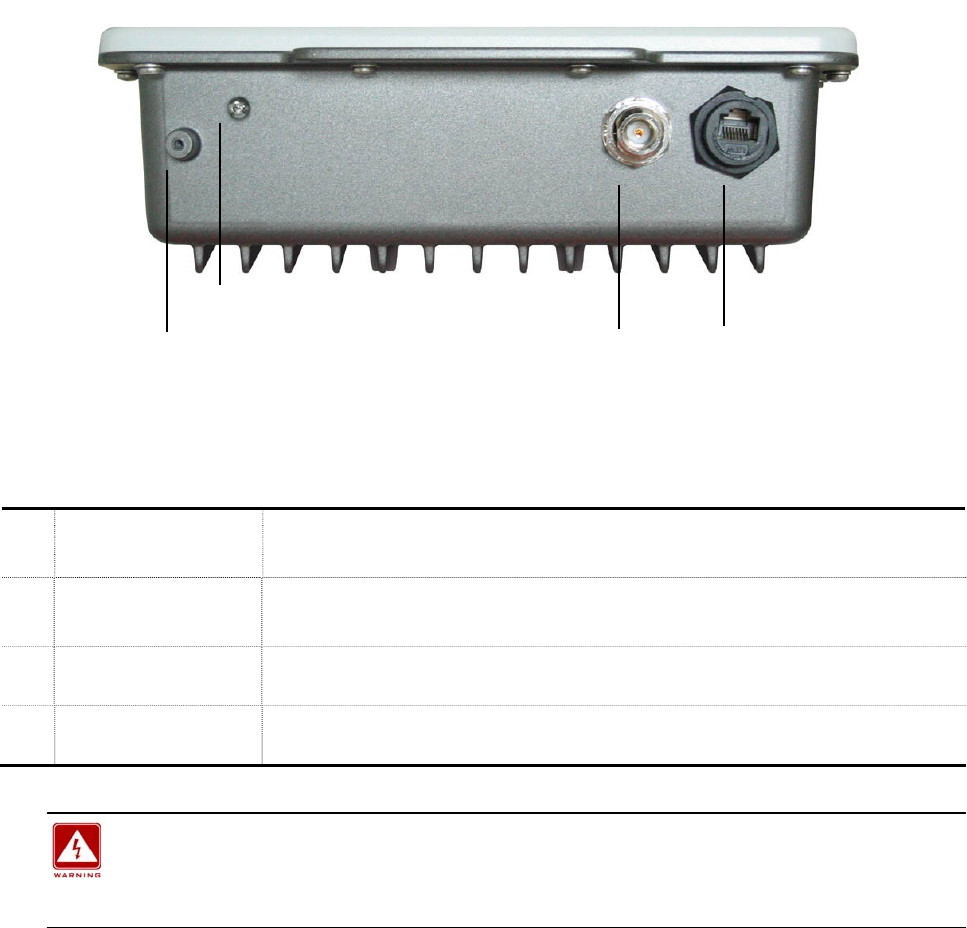
8
1-4 Hardware Description
Please refer to the following table for the meaning of each feature.
MECHANICAL DESCRIPTION
Please refer to the following table for the meaning of each feature.
Figure 1-1A Outdoor Multi-function Radio for External Antenna
1 RJ-45 Port Use the SFTP cat.5 cable with weatherproof connector to connect to the “To
ODU” side of the POE injector.
2 Type-N (f) Antenna
Connector
For connecting external antenna. Please contact WNI Global, Inc. for
recommended antenna selection.
3 Grounding stud Connect to the ground conductor using a minimum of 6 AWG copper wire or
braid.
4 Reset button Remove this screw and insert a paper clip to press in and hold the reset
button for 5~10 seconds to reset the radio to factory default settings.
This equipment must be grounded. Never defeat the ground conductor or operate
the equipment in the absence of a suitably installed ground conductor. Contact
the appropriate electrical inspection authority or an electrician if you are
uncertain that suitable grounding is available.
Type-N (f) Antenna
Connector
Grounding stud RJ-45 Port
Reset button
Outdoor Multi-function Radio Quick Installation Guide
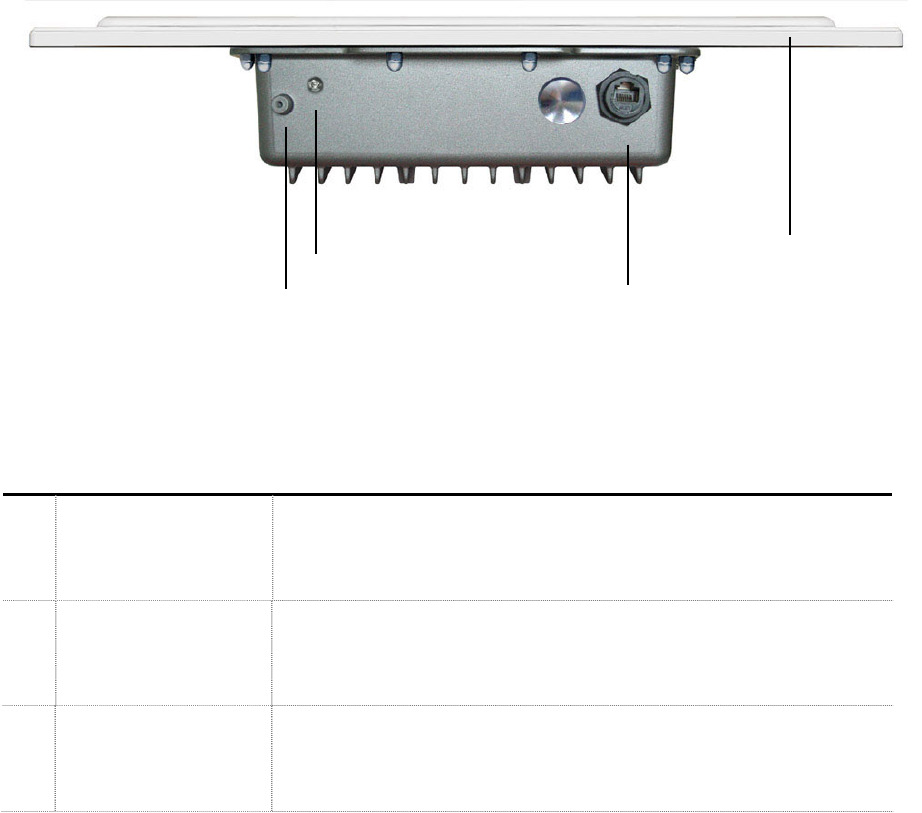
9
ODU –Integral Antenna Unit
Figure 1-1B Outdoor Multi-Function Radio with Integral Antenna
1RJ-45 Port Use the SFTP cat.5 cable with weatherproof connector to
connect to the “To ODU” side of the POE injector.
2Grounding Stud Connect to the ground conductor using a minimum of 6 AWG
copper wire or braid.
3Reset Button Remove this screw and insert a paper clip to press in and hold
the reset button for 5~10 seconds to reset the radio to factory
default settings.
Grounding stud RJ-45 Port
Reset button Integral Antenna
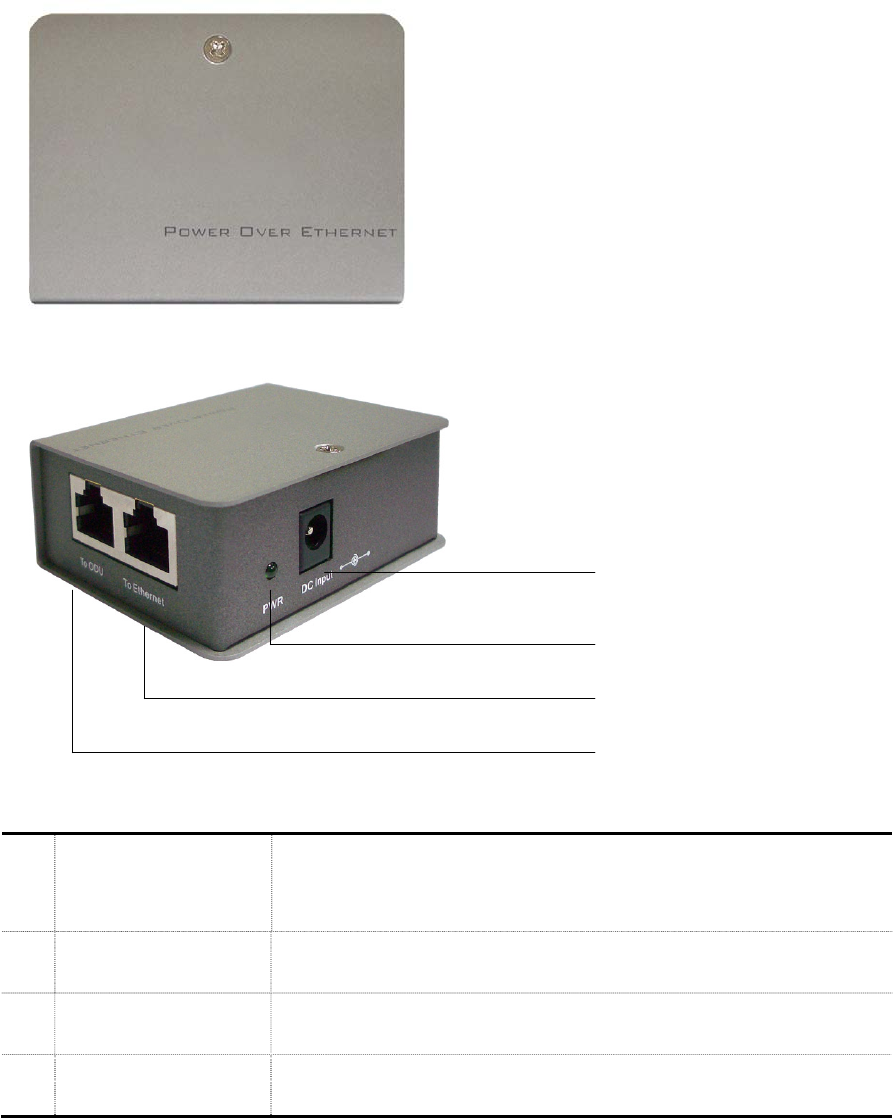
10
PoE (Power over Ethernet)
Figure 1-2 Power over Ethernet injector
1To Ethernet RJ-45 port used to connect to the 10/100 Base T complied
device such as switch, router or PC.
2To ODU RJ-45 port used to connect to the ODU.
3DC Input Connect to the Power adaptor for DC input.
4LED Indicator Power LED
To Ethernet
To Radio
DC Input
LED Indicator (Power)

11
This equipment must be grounded. Never defeat the ground conductor or operate
the equipment in the absence of a suitably installed ground conductor. Contact
the appropriate electrical inspection authority or an electrician if you are
uncertain that suitable grounding is available.
The Outdoor Multi-function radio and POE injector can be damaged by incorrect
power application. Read and carefully follow the installation instructions before
connecting the system to its power source.
Power Over Ethernet Injector is not a waterproof unit and should not be used
outdoors.

12
1-5 Hardware Installation
The Outdoor Multi-function Radio operates in a license free frequency band in most
countries, and is therefore susceptible to interfering signals from other devices in the
area. Taking some simple precautions can reduce the likelihood of poor link
performance due to interfering signals.
x Check to see if there are other radios operating in the same frequency band on
the same structure or nearby. If the operating channels of these devices can be
determined, set your radio to a no-overlapping channel.
x Make sure that there is direct line of sight to the receiving radio. Trees and
other obstructions can reduce signal levels and cause poor link performance.
Site Surveys
It is advisable to conduct a site survey prior to the installation. The survey should
include checking availability of power, grounding systems, proper mounting structure,
grounding of mounting structure, line of sight, fresnel zone clearance, and any other
issues that may affect the installation.
It is a good practice to configure and verify the 802.11a Outdoor Multi-function
Radio operation before you mount the radio in a remote location.
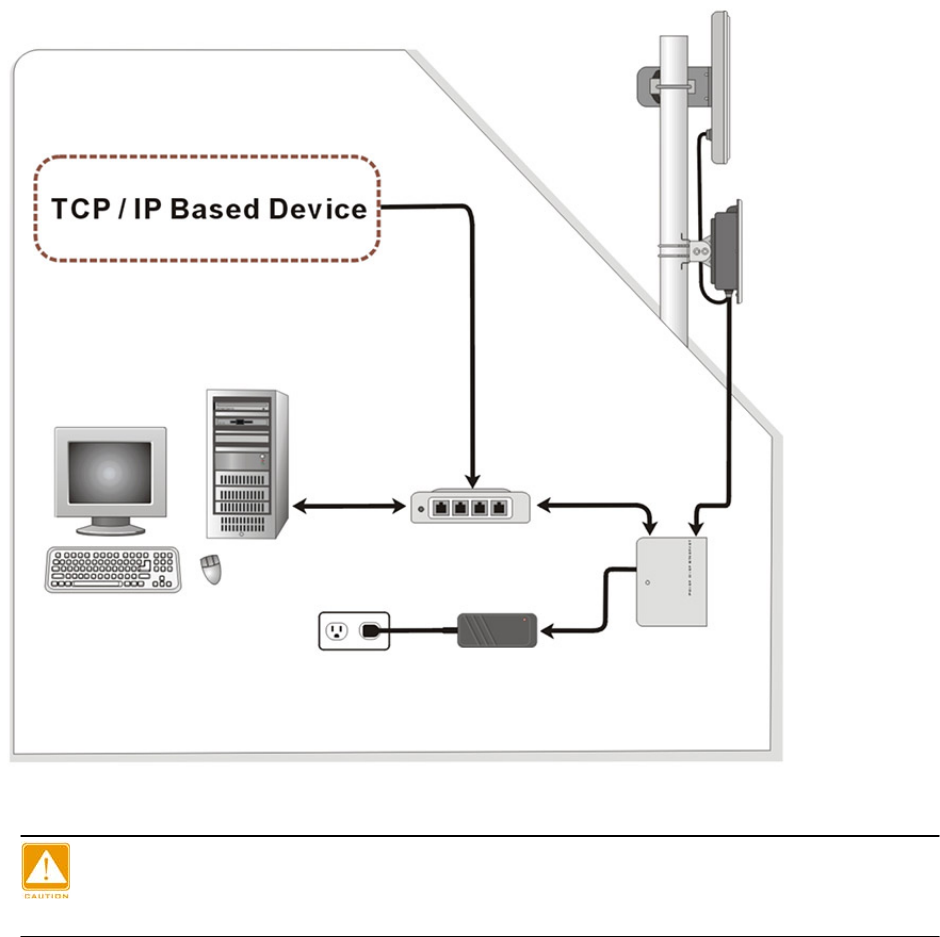
13
Figure 1-3A: Hardware Installation with External Antenna
Power Over Ethernet Injector is not a waterproof unit, should not be used
outdoors
Connect the Ethernet Cable
The Outdoor Multi-function Radio support 10/100M Ethernet connection. Attach your
SFTP / SSTP cat.5 Ethernet cable with waterproof connector to the RJ-45 connector on
the ODU enclosure. Then connect the other end of the cable to the “To ODU” side on
PoE injector.
Externa
Antenna
IEEE802.11a/b/g
Outdoor Multi-function
Radio
Power adaptor
DC 15V
PoE
AC Outlet
110V~240V
Router / Switch
( Optional )
OUTDOOR
INDOOR
10/ 100 Base T
10/ 100 Base T
External
Antenna
DC Power
Adaptor
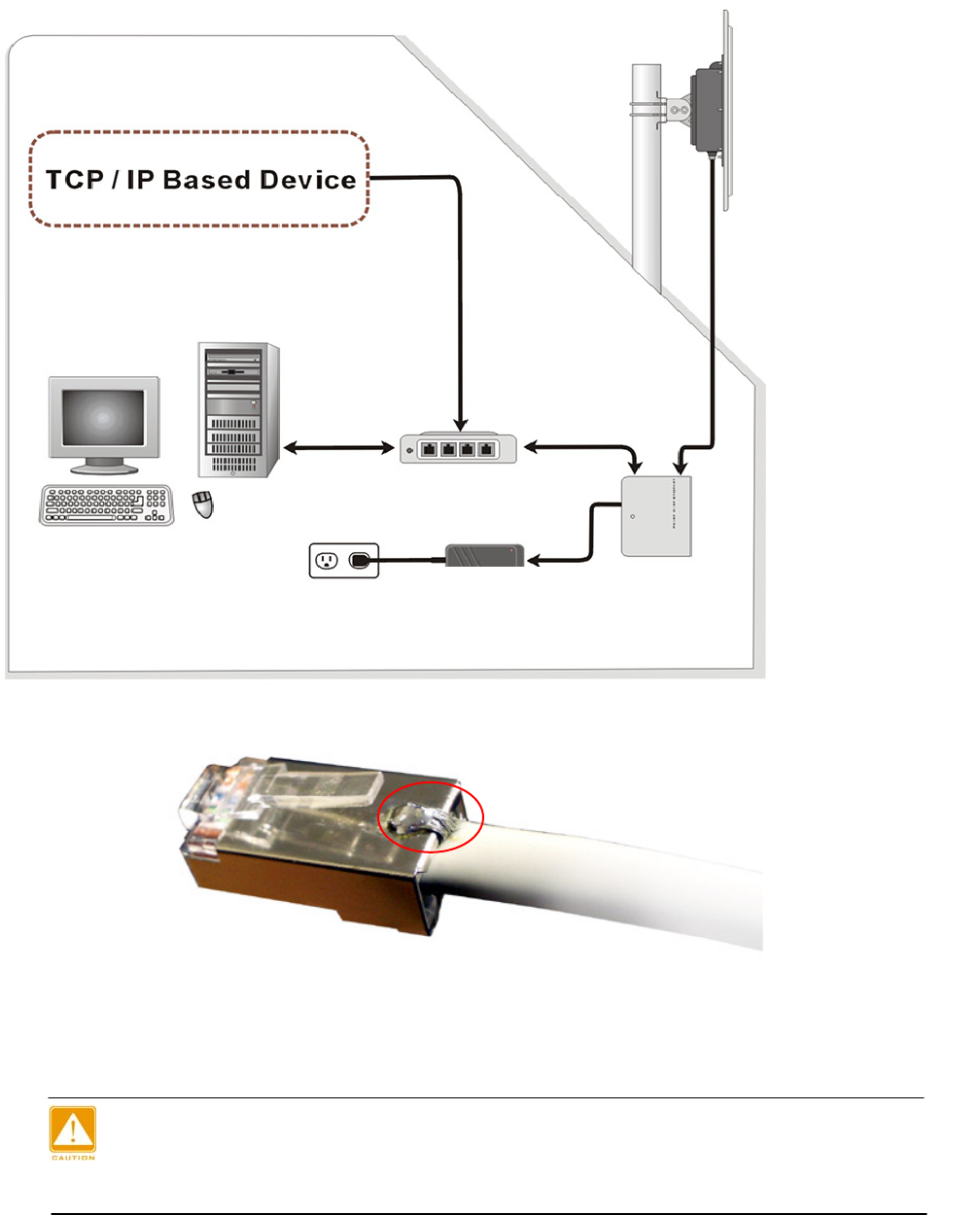
14
Figure 1-3B: Hardware Installation with Integral Antenna Radio
Figure 1-4 Solder the RJ-45 connector with the SFTP cable
Solder the SFTP cable as the Figure 2-4, make sure the solder bead is NOT bigger
than that shown in the figure, or it may affect the function of the waterproof RJ-45
connector.
OUTDOOR
INDOOR IEEE802.11a Outdoor
Multi-Function Radio
with Integral Antenna
10/ 100 Base T
10/ 100 Base T
PoEPower adaptor
DC 15V
AC Outlet
110V~240V
DC Power
Ada
p
to
r
IEEE 802.11a/b/g
Outdoor Multi-Function
Radio with Integral
A
ntenna
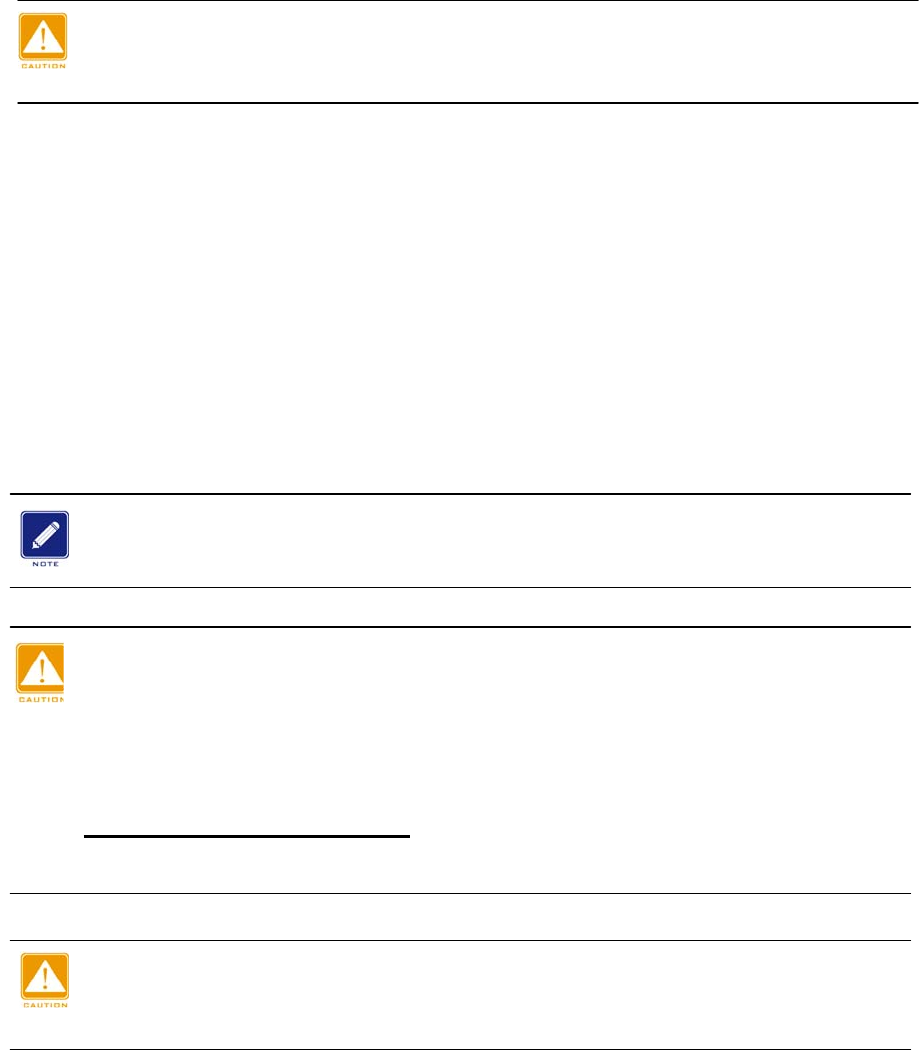
15
Attach the antenna
You can attach the proper antenna to the N-type connector on the Outdoor Multi-function
Radio.
To meet regulatory restrictions, the outdoor radio and the external antenna must
be professionally installed.
Connect the Power Cable
Connect the power adapter to the PoE injector, and plug the other end of the electrical
outlet (AC 110V~240V).
Mounting the 802.11a Outdoor Multi-function Radio
The outdoor radio is usually installed on a rooftop, tower, wall, or a suitable flat surface.
For detailed mounting instructions, please refer to the Quick Installation Guide.
Only trained and qualified professional personnel should be allowed to install,
replace, or service this equipment.
FCC Part 15.247(i) System operating under the provisions of this section shall be
operated in a manner that ensures that the public is not exposed to radio frequency
levels in excess of the comissions guidelines.
Limit S = 1 mW / cm2 from section 1.3107(b)(1) Table 1
Note to professional installer: At the location of transmitters, the minimum
MPE safe distance, is at least 420 cm with an antenna having a gain of
34.5 dBi.
Wind the water-resistant adhesive tape around the RJ-45 and N-type connector
on the outdoor radio enclosure as the last step of the mounting procedures.
Hardware Installation

16
Connect the ground stud
Connect a minimum 6 AWG Wire to the ground stud on the ODU, and connect the other
end to a suitable ground using the shortest and most direct route.
This equipment must be grounded. Never operate the equipment in the absence of
a suitably installed ground conductor. Contact the appropriate electrical
inspection authority or an electrician if you are uncertain that suitable grounding
is available.
Chapter 2. Security
This chapter explains how to place and connect the outdoor radio. In addition, the radio’s
security features are elaborated.
2-1 Default Factory Settings
Radio default factory settings are detailed below. Factory Default Restore will enable you to
restore these defaults.
FEATURE FACTORY DEFAULT SETTINGS
User Name (case sensitive) admin
Password (case sensitive) password
radio Name APxxxxxx(xxxxxx represents the last 6 digits of
MAC address)
Country / Region United States
Router Mode Bridge
IP Type static IP
IP Address 192.168.1.1
IP Subnet Mask 255.255.255.0
Default Gateway 0.0.0.0
Operating Mode Access Point
Wireless Mode Auto (IEEE 802.11a or 802.11/b/g)
Channel / Frequency 52 / 5260 MHz or 11 / 2412 MHz
17
2-2 Getting to Know Radio Wireless Security Options
WNI Global, Inc. wants to make wireless networking as safe and easy for you as possible.
This radio provides several network security features, but they require specific action on your
part for implementation.
Security Precautions
The following is a complete list of security precautions that may be taken as shown in this
User’s Manual.
1. Change the default SSID.
2. Disable SSID Broadcast.
3. Change the default password for the Administrator account.
4. Enable MAC Address Filtering.
5. Change the SSID periodically.
6. Use the highest encryption algorithm possible. Use WPA if it is available. Please note that
this may reduce your network performance.
7. Change the WEP encryption keys periodically.
To ensure network security, steps one through four should be followed at a
minimum.
Security Options
There are several ways you can enhance the security of your wireless network:
• Restrict Access Based on MAC address. You can restrict access to only trusted clients so
that unknown clients cannot wirelessly connect to the radio. MAC address filtering adds an
obstacle against unwanted access to your network, but the data broadcast over the wireless
link is still fully exposed.
• Use WEP. Wired Equivalent Privacy (WEP) data encryption provides data security. WEP
Shared Key authentication and WEP data encryption will block all but the most determined
eavesdropper.
• Use WPA or WPA-PSK. Wi-Fi Protected Access (WPA) data encryption provides data
security. The very strong authentication along with dynamic per frame re-keying of WPA
makes it virtually impossible to compromise.
• Enable Wireless Security Separator. The associated wireless clients will not be able to
communicate with each other if this feature is enabled. The default setting is disabling.
18
2-3 Installing the radio as an AP (Access Point)
Before installing, you should make sure that your Ethernet network is working perfectly. You
will be connecting the radio to the Ethernet network so that computers with 10/100 Fast
Ethernet adapters will communicate with computers, servers, etc., on the Ethernet.
1. SET UP THE AP
Tip: Before mounting the radio in a high location, first set up and test the radio and
verify wired network connectivity
.
a. Prepare a computer with an Ethernet adapter. If this computer is already part of your
network, record its TCP/IP configuration settings.
b. Configure the computer with a static IP address of 192.168.1.x (x cannot be 1) and
255.255.255.0 for the Subnet Mask.
c. Connect the Cat.5 SFTP cable from the radio to the POE.
d. Connect a Cat.5 UTP cable from the POE to computer.
e. connect the power adapter to the AP and verify the following:
– The power light of the POE goes on.
– The LAN light of the Ethernet port on computer is on.
2. To CONFIGURE LAN AND WIRELESS ACCESS
a. Configure the AP Ethernet port for LAN access
• Connect to the AP by opening your browser and entering http://192.168.1.1 in the
address field. A login window like the one shown below will open:
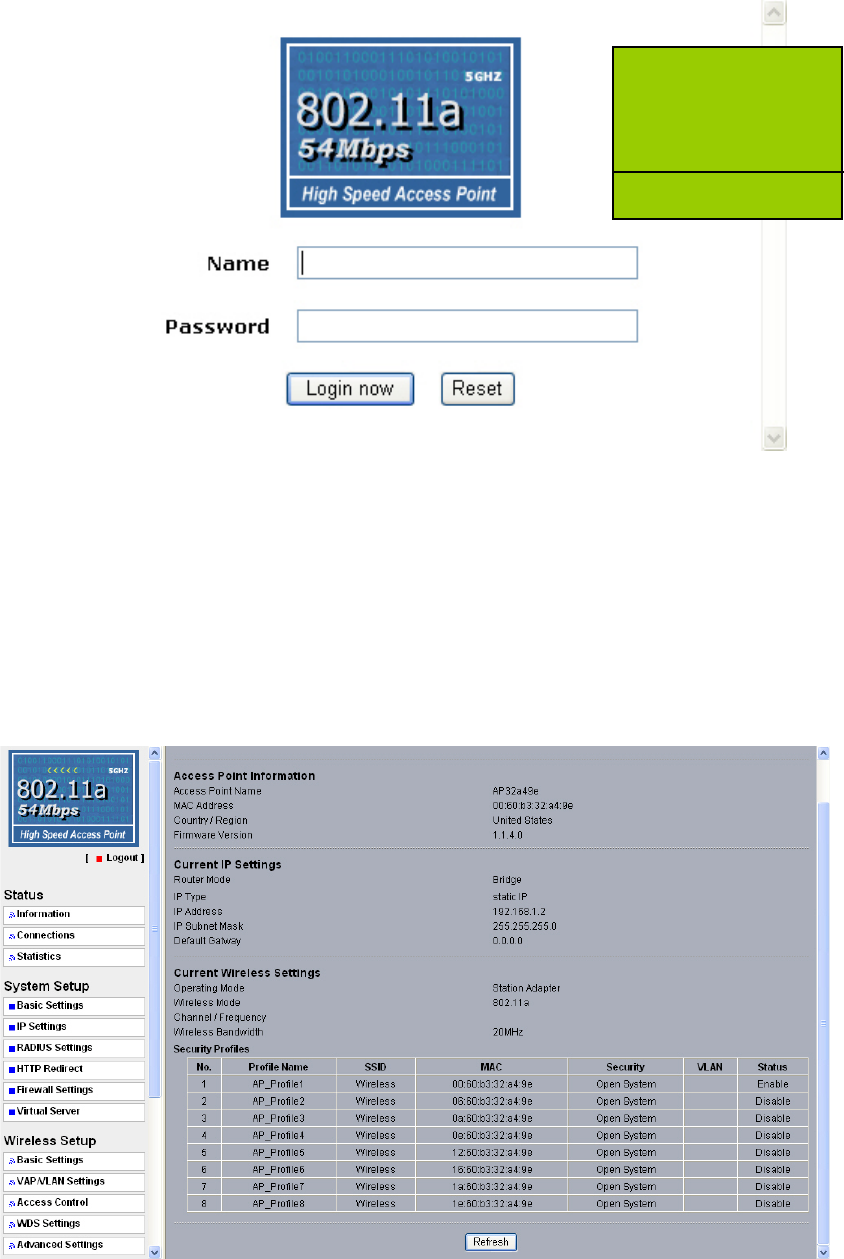
19
Figure: 2-1 AP log in window
When prompted, please enter admin for Name and password for password, both in
lower case.
3. Clicking Login now will navigate you into this radio’s homepage. This page contains
General Information as shown below.
Figure: 2-2 AP general information page
2.4 GHz
802.11g
54 Mbps
High Speed Access Point
or
20
Chapter 3. General Information
General information gives you basic information regarding the configuration of the radio..
3-1 Information
The information displayed is as follows:
Access Point Name: You may assign any device name to the Access Point. This name is
only used by the Access Point administrator for identification purposes. Unique, memorable
names are helpful, especially if you are employing multiple access points on the same
network. The default name is APxxxxxx.
MAC Address: Short for Media Access Control address, a hardware address that uniquely
identifies each node of a network.
Country/Region: This field identifies the region where the AP can be used. It may not be
legal to operate the wireless features of the wireless access point in a region other than one
of those identified in this field. The default country is the United States.
Firmware Version: Firmware is stored in a flash memory and can be upgraded easily, using
your Web browser, and can be upgraded via ftp server.
.
IP Type: By default, the AP is configured as static IP Address.
IP Address: The IP address must be unique to your network. The default IP address is
192.168.1.1
Subnet Mask: The Subnet Mask must be the same as that set on the LAN that your Access
Point is connected to. The default is 255.255.255.0
.
Operating Mode: AP provides five modes, Access Point, Station, bridge, repeater, and
inter-building.
•Access Point: Acts as a standard 802.11a or 802.11g. This is the default mode.
•Station: Performs as a client station associated to other APs.
•Wireless bridge: In this mode, the AP only communicates with another bridge-mode wireless
station. You must enter the MAC address (physical address) of the other bridge-mode
wireless station in the field provided. It is advisable to use WEP in order to protect this data
from intruders.
21
•Point to Multi-Point Bridge: Select this only if this AP is the “Master” for a group of
bridge-mode wireless stations. The other bridge-mode wireless stations must be set to
Point-to-Point Bridge mode, using this AP MAC address. They then send all traffic to this
“Master”, rather than communicate directly with each other. WEP should be used to protect
this traffic.
•Wireless Repeater: In this mode, the AP can communicate with another wireless station or
wireless bridge. You can enter the MAC address of both adjacent repeaters in the fields
provided to communicate with another wireless bridge. Or you can use a common SSID to
communicate with another wireless station. WEP should be used to protect this
communication.
Inter-building: Under Unique to Ky m a S t a r WDS mode, AP will automatically connect to our
11b radio which is set to inter-building mode too, without manually entering MAC address for
each other.
Wireless Mode: Select the desired wireless operating mode. The default mode is 802.11a.
Channel: This field identifies which operating frequency will be used.
Security Profiles: This provides a list of virtual APs derived from AP Virtual AP, spelling out
profile name, SSID, MAC, security, and status.
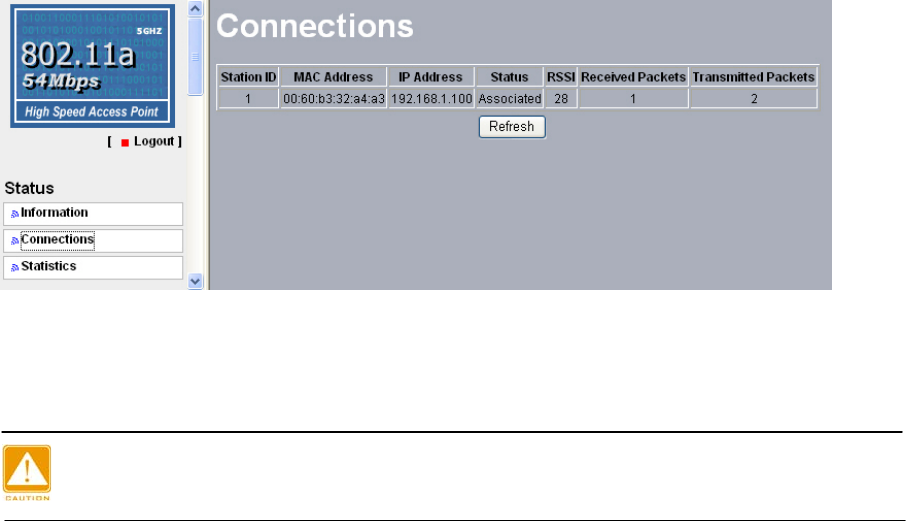
22
3-2 Connection
Under the Information heading, click the connection link to view the connection status as
shown below.
Figure: 3-1 AP connection status
If the wireless access point is rebooted, the table data is lost until the wireless
access point rediscovers the devices.
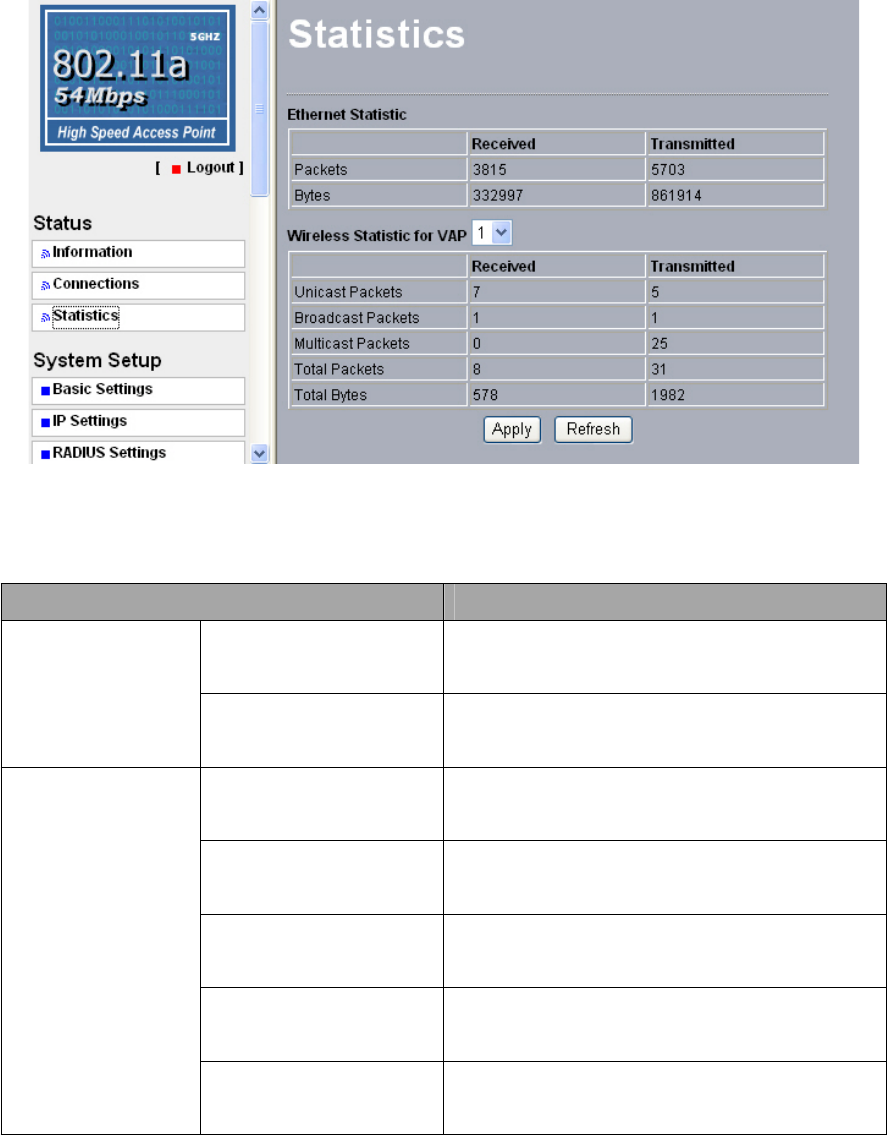
23
Statistics
The statistics page provides various LAN and WAN statistics.
Figure: 3-2 statistics
Field Description
Packets The number of packets sent since the AP was
restarted.
Wired Ethernet
Bytes The number of bytes sent since the AP was
restarted.
Unicast Packets The Unicast packets sent since the AP was
restarted.
Broadcast Packets The Broadcast packets sent since the AP
was restarted.
Multicast Packets The Multicast packets sent since the AP was
restarted.
Total Packets The Wireless packets sent since the AP was
restarted.
Wireless
Total Bytes The Wireless bytes sent since the AP was
restarted.
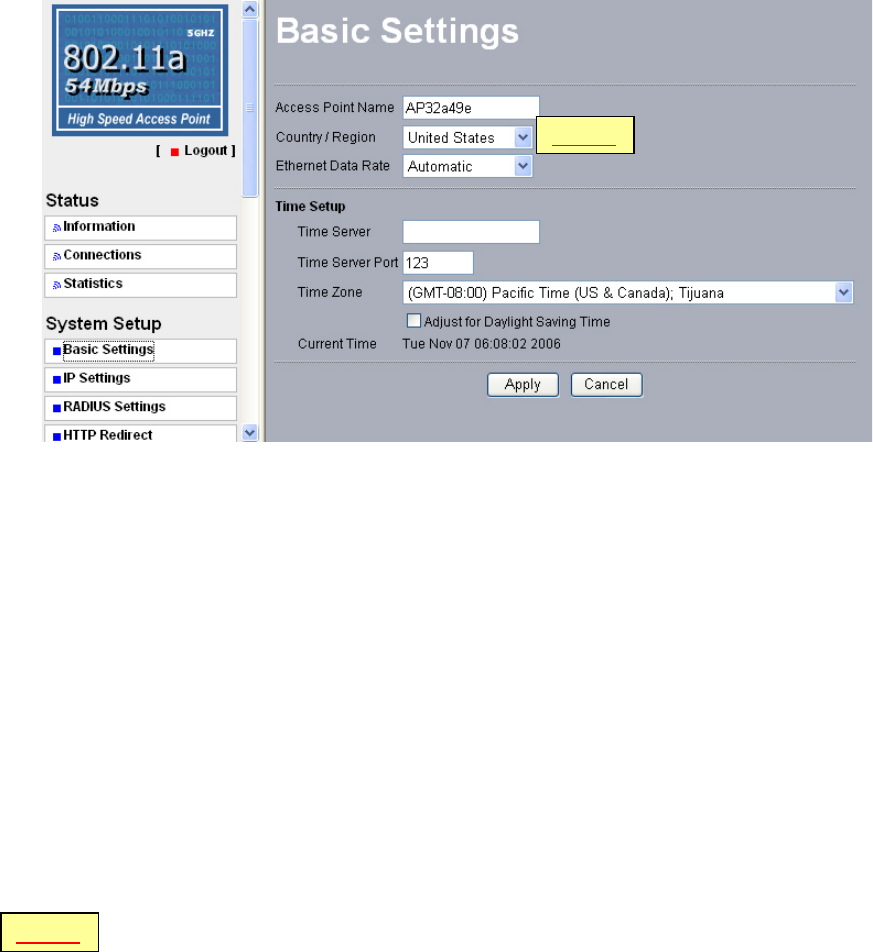
24
Chapter 4. Multiple Functionalities
The versatile radio provides many useful functions.
4-1 Time Server
By clicking on Basic Settings, the “Basic Settings” page will appear as shown below.
Figure: 4-1 AP Basic settings
The AP allows you to synchronize the time between your network and time server by using
NTP Time Server. The time Server provides the current time in any world time zone.
Adjustments for Daylight Saving Time (or Summer Time) are made according to each
location's rules and laws.
Time Server Port: This field identifies the time server port, such as 123.
Time Zone: Select the time zone location for your setting.
Current Time: This field identifies the current time in your specific time Zone.
If the country you are operating this product in is not listed, please select a
country which has the same Channel Plan as the operating country.
Note A
Note A
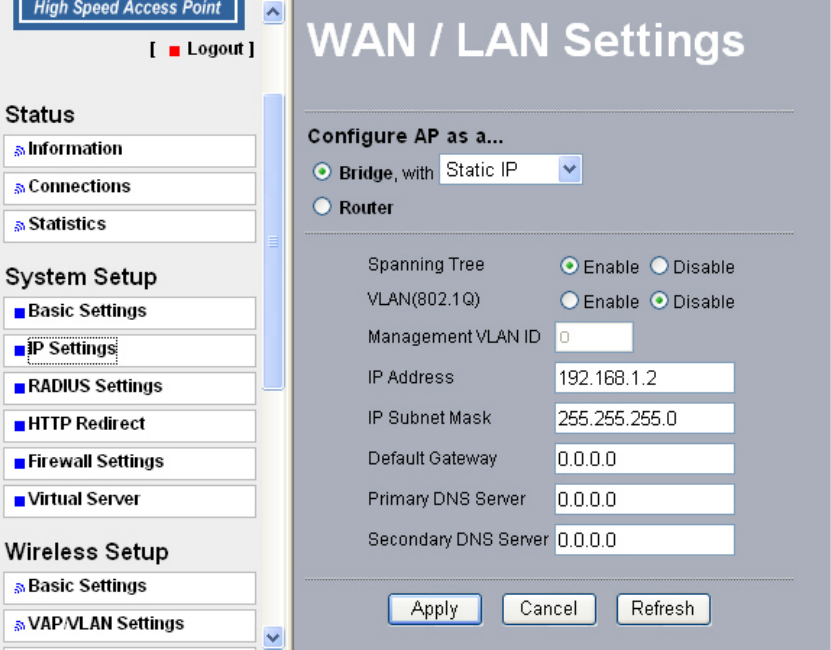
25
4-2 Bridge/Router Mode
From the system setup, click IP Settings, and you’ll be navigated into the WAN/LAN Settings
page.
Figure: 4-2 AP WAN/LAN settings
This radio can be figured in bridge mode or router mode.
Bridge Mode
In Bridge Mode, the AP will act as a pass-through, bridging your network by associating with
various devices. This can extend the radius of your network.
Spanning Tree: Enabling spanning tree can prevent undesirable loops in the network,
ensuring a smooth running network. By default, the function is enabled.
Router Mode
In Router Mode, the radio has two ports, a WAN port and a LAN port.
This is the page where you will set the IP address, subnet mask, default gateway, ans DNS
servers for you’re the radio. Remember to click Apply to save your changes.
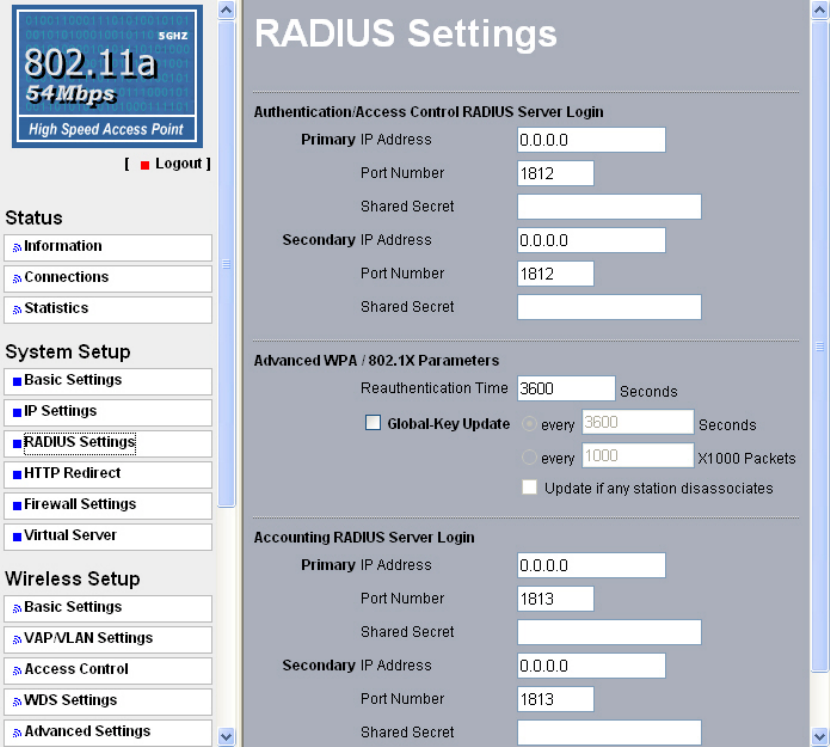
26
4-3 Understanding RADIUS Settings
RADIUS is a server for remote user authentication and accounting. It can be used on any
network that needs a centralized authentication and/or accounting service for its workstations.
From the system Setup, click Radius Settings. The RADIUS Settings will display as below.
Figure: 4-3 AP Radius settings
You will need to fill in the following Radius server settings:
• Primary Radius Server IP Address
This field is required. Enter the IP address of the Radius Server on your LAN or WAN.
• Secondary Radius Server IP Address
This field is optional. Enter the IP address of the Secondary Radius Server on your LAN.
•
Radius Port
Enter the port number used for connections to the Radius Server.
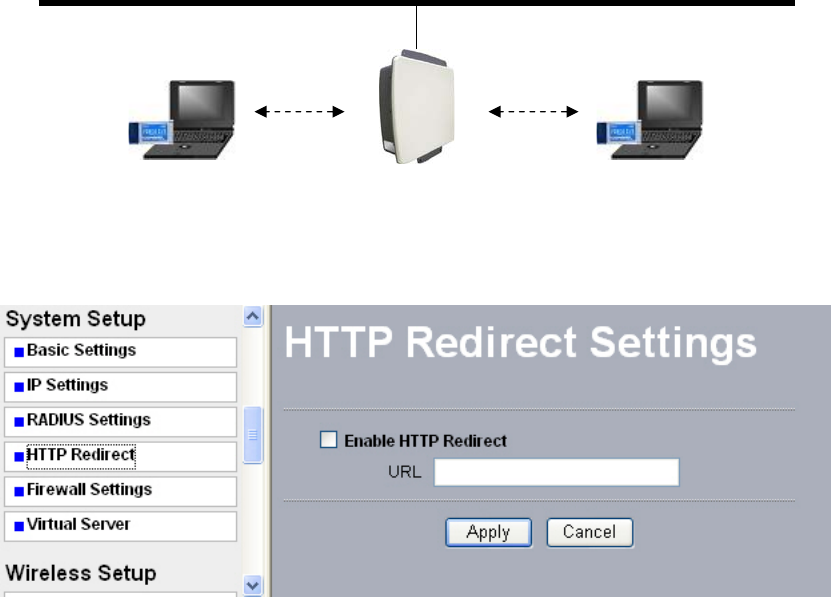
27
• Radius Shared Key
Enter the desired value for the Radius shared key. This key enables the AP to log in to the
Radius server, and must match the value used on the Radius server
.
•Radius Accounting Option
The Radius Accounting option can be enabled in order to track information such as, who
connected to the network, when they connected, how long they were connected, how much
network traffic they generated, etc..
4-4 HTTP Redirect
This feature allow you to direct anyone that logs on to this access point, to a website of your
choosing. This is useful for billing, advertising, and many other purposes.
The following are the HTTP Redirect Settings.
Figure: 4-4 AP HTTP Redirect settings
URL
Enter your desired website in this field. Be sure to click “Apply” to save the configuration.
STA2 STA1
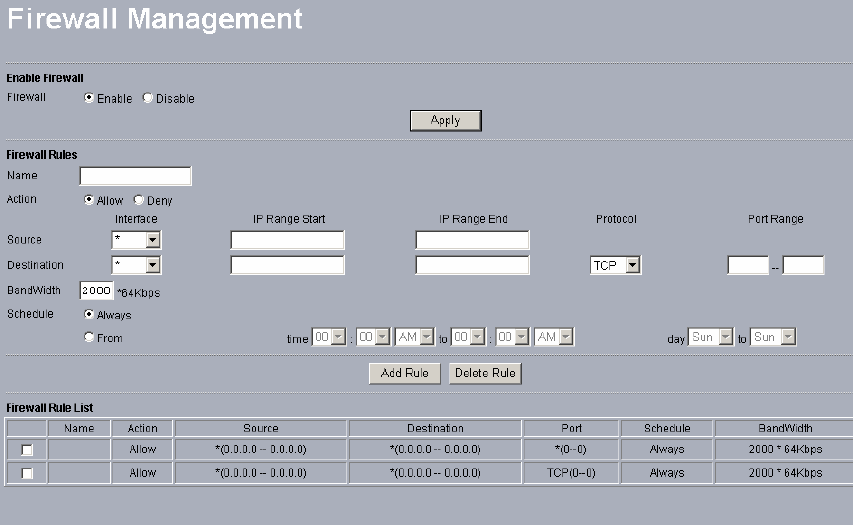
28
4-5 Firewall Management
Today’s companies rely on highly networked, secure computing environments to efficiently
and safely conduct business. Firewalls are a key component of any secure network. Firewalls
are configured to allow “desired” traffic in, and to keep “undesired” traffic out.
This radio (access point) has an excellent firewall management feature..
Please see the diagram below. Acting as a firewall, the radio will filter your undesired data
and protocols, only delivering the “wanted” to your network.
Click the firewall link and you’ll be navigated to the Firewall Management interface.
Figure: 4-5 AP firewall management
Before applying the firewall management, you’ll need to enable the firewall.
Here we’ll discuss the Firewall.
• Name
Enter your desired firewall rule name in this field
.
• Allow
This field allows you to specify a range of IP addresses that will be allowed access to your
network.

29
.
• Deny
This field allows you to specify a range of IP addresses that will be denied access to your
network.
• Interface
This is where you select the source and destination interfaces of the packets to which this
rule will apply.
•IP Range Start
This specifies the starting-point of your specific IP addresses.
•IP Range End
This specifies the ending-point of your specific IP addresses.
•Protocol
This is where you can select specific protocols that will be affected by this rule.
•Port Range
This you select the range of ports that will be affected by this rule.
•Schedule
Here you can select a specific time period that will be affected by this rule, or you can click
“Always” for the rule to be in effect all of the time.
•Bandwidth
You can set the bandwidth with n*64Kb / per second to limit the data flow.
After completing a firewall rule configuration, please click Add Rule. The Firewall Rule List will
appear below.
Figure: 4-6 Firewall list
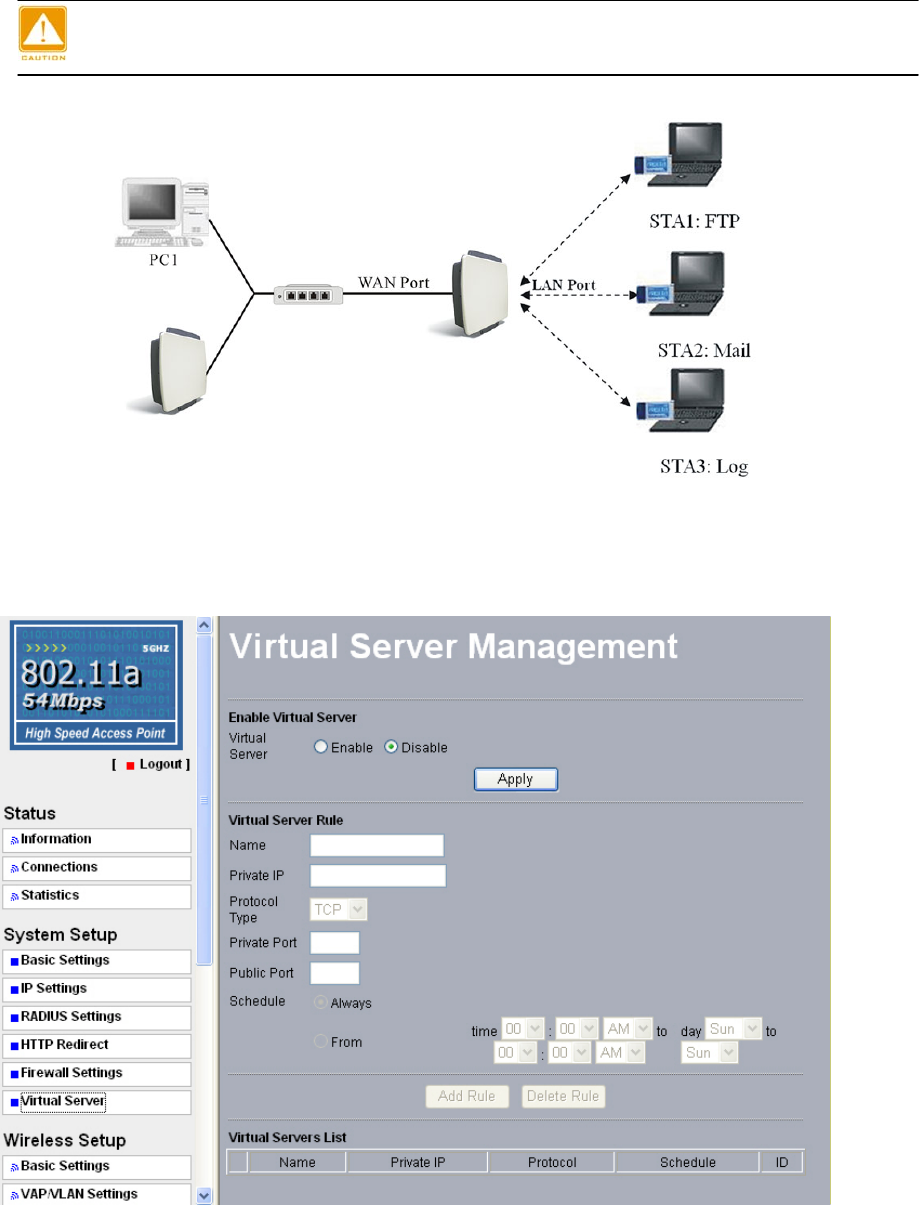
30
4-6 Virtual Server
Virtual server can be enabled only in router mode.
The radio (which is set as an AP), can act as a virtual server, allowing clients access to
multiple servers as in the diagram above.
Figure: 4-7 AP virtual server management
Hub
31
Below are the elements included in the Virtual Server Management page.
•Name
Enter the name of the virtual in this field.
•Private IP
This specifies the IP Address of the server in your LAN.
•Protocol Type
Select TCP or UDP
•Private Port
This specifies your LAN port.
•Public Port
This specifies your WAN port
.
•Schedule
You can set a time-limit when your AP acts as a virtual server, by enabling “from”.
Alternatively, if you desire your AP to act as a virtual server for a long time, please enable
“always”.
•Virtual Server List
This provides you with the detailed list of virtual servers.
When completing configuration of your virtual server, please click “Add Rule” to save the
setting.